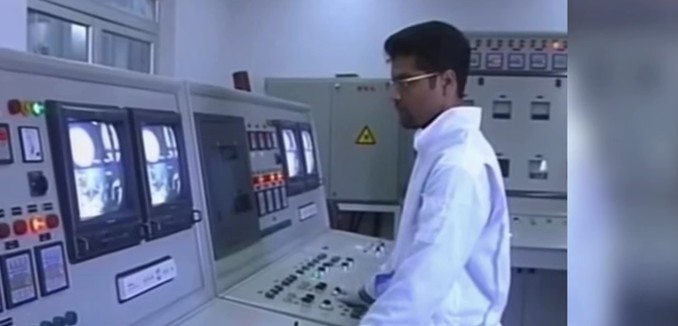The recently released International Atomic Energy Agency report on Iran’s illicit nuclear activities raises concerns about the extent of the regime’s covert nuclear research, and suggests that future enforcement of the nuclear deal will be impossible.
The IAEA’s investigative report, which was published last week, determined that Iran was conducting work on nuclear detonators as late as 2009, and revealed that the extent of Iran’s research into nuclear bomb technology exceeded what was already publicly known. The IAEA’s findings, which were constrained by Iran’s failure to provide all of the information that the agency requested, raise questions about how much more research Iran completed without detection. Notably, the report also undercuts U.S. Secretary of State John Kerry’s assertion in June that the U.S. had “absolute knowledge” of Iran’s past nuclear work.
Understanding the full scope of Iran’s past nuclear research “is seen as not just another issue – say, one that Iran could refuse to trade away by making concessions in other areas – but as a prerequisite to verifying Iranian compliance across all issues,” Omri Ceren, The Israel Project’s managing director for press and strategy, wrote in The Tower last year. The Israel Project publishes The Tower.
Ceren’s concerns were echoed Friday in The New York Times by David Sanger, the paper’s chief Washington correspondent. After noting that the Obama administration was now allowing Iran to dismiss questions that “it once insisted could not remain unaddressed,” Sanger observed that the IAEA’s expected decision to close the file on Iran’s past nuclear research “raises questions over whether the world’s nuclear watchdog has lost its ability to strike fear into nations secretly pursuing the bomb.” If Iran could get away without coming clean about its past, “will it be emboldened to stiff-arm inspectors as they seek to enforce the nuclear deal?” Furthermore, Sanger asked, if Iran can get away with defying the IAEA, would other countries, such as Japan or Saudi Arabia, be able to do so as well?
An anonymous IAEA official told Sanger last week that, in the wake of the nuclear deal with Iran, he worries that the agency “created a poor precedent for the future.” The official added, “We have no way to force states to come clean, and never have.”
Aside from emphasizing the gaps in the international community’s understanding of Iran’s past nuclear activities, the IAEA report also suggests a problem with the ability of the P5+1 nations to enforce Iran’s compliance with the deal in the future.
In its analysis (.pdf) of the report, the Institute for Science and International Security observed that the IAEA had “found chemically man-made particles of natural uranium” at the Parchin military site. The institute noted that this finding suggested “that Iran conducted high explosive work on a uranium deuteride neutron initiator at Parchin.” However, the institute wrote that the IAEA could not reach a “definitive conclusion” about what produced the suspicious molecules because Iran sanitized the site over the past decade.
This shows that, in order to cheat without consequences, Iran simply needs to stall future inspections until it can clean a suspicious nuclear site. Under the nuclear deal, Iran has at least 24 days to make suspected nuclear sites available to international inspectors.
After the agreement was announced in July, Kerry and Secretary of Energy Ernest Moniz wrote that this lead time was not a concern because “environmental sampling can detect microscopic traces of nuclear activities even after attempts to remove evidence.” However, as the IAEA report underscores, even if Iran can’t remove all traces of illicit nuclear work, it can prevent inspectors from reaching a “definitive conclusion” about its activities.
The section of the nuclear deal (.pdf) that addresses future Iranian violations, and which authorizes inspectors to access a suspicious but previously undeclared nuclear site only after a delay, is called the “Dispute Resolution Mechanism.” In order for the P5+1 nations to impose any sort of sanctions on Iran for future violations, they would have to submit a complaint about Iran’s violations to a series of panels. Without “definitive” proof, it would be impossible to find Iran in violation of the deal and reimpose sanctions, gutting the administration’s primary means of enforcing the agreement.
Beyond allowing Iran to evade the consequences of its past nuclear cheating and undermining the authority of the IAEA, the nuclear deal thus also makes it difficult, if not impossible, to enforce Iranian compliance in the future.
[Photo: Washington Post / YouTube ]




